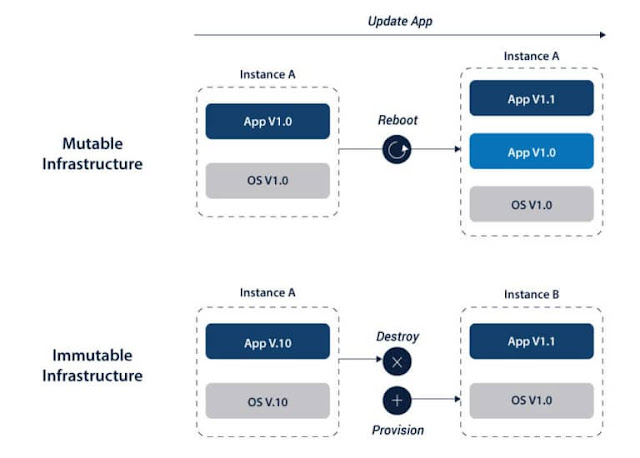Mutable vs. Immutable Infrastructure
Definitions of Mutable and Immutable
A: capable of change or of being changed. B: capable of or liable to mutation
not capable of or susceptible to change
What is mutable infrastructure?
The word “mutable” means “liable to change,” which makes the term “mutable infrastructure” a very apt one. Mutable infrastructure is IT server infrastructure that is capable of being modified and updated in-place on a regular basis. Traditionally, server architectures have been mutable due to the greater short-term flexibility that the mutable approach provides. However, mutable infrastructure comes at the cost of predictability and consistency between different server deployments, as is possible with immutable infrastructure.
What is immutable infrastructure?
As you might have guessed, the word “immutable” is the antonym of “mutable,” meaning “unchanging or unable to change.” Immutable infrastructure is IT server infrastructure that, once deployed, cannot be modified. It’s often associated with the software engineering practices DevOps and continuous delivery. In the event that changes or updates need to be made, an entirely new instance with the proper modifications is deployed onto the server. New environments can be spawned in the cloud in a matter of minutes.
Further Reading:
- https://cloudinfrastructureservices.co.uk/what-is-immutable-infrastructure-best-practices/
- https://eplexity.com/blog/a-side-by-side-comparison-of-immutable-vs-mutable-infrastructure/
- https://www.hashicorp.com/resources/what-is-mutable-vs-immutable-infrastructure
- https://www.sumologic.com/insight/mutable-immutable-infrastructure/

Post a Comment